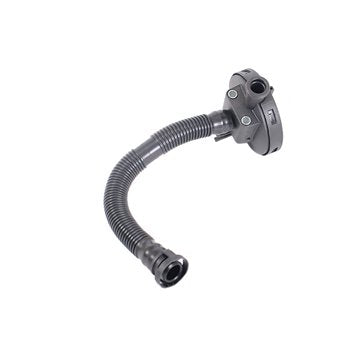Just How a Clp Engine Can Improve Performance in Different Industries
The introduction of CLP engines marks a substantial shift in operational efficiency across different fields, driven by their capacity to maximize fuel intake and decrease downtime. As organizations increasingly focus on sustainability along with efficiency, the duty of CLP engines becomes even a lot more essential.
Summary of CLP Engines
CLP engines, or Continuous Fluid Propellant engines, stand for a significant advancement in propulsion innovation, specifically for room applications. These engines use a continuous feed system that permits for the continual expulsion of propellant, bring about boosted performance and efficiency compared to standard strong or hybrid propulsion systems. By preserving a consistent circulation of fluid propellant, CLP engines can accomplish extra specific drive control, which is critical for navigating spacecraft in different goal scenarios.
The design of CLP engines integrates advanced materials and cutting-edge fuel administration systems. clp engine. This causes decreased weight and enhanced integrity, important factors for long-duration room missions. Furthermore, the continuous operation decreases the danger of burning instability, an usual obstacle in conventional rocket engines.

Benefits in Production
The manufacturing of Constant Fluid Propellant (CLP) engines provides a number of remarkable benefits that improve both effectiveness and cost-effectiveness. One of the primary advantages is the streamlined manufacturing procedure, which minimizes the intricacy related to conventional propulsion systems. By utilizing fluid propellant, producers can achieve better precision in engine performance, bring about enhanced power result and reduced waste.
In addition, CLP engines promote a higher degree of modularity, enabling simpler assimilation into numerous manufacturing lines. This versatility can considerably reduce lead times and enhance overall operational flexibility. Using CLP modern technology also has a tendency to minimize the requirement for considerable upkeep because of less relocating parts, which translates into decreased downtime and operational costs.

Applications in Logistics
Leveraging Continual Liquid Propellant (CLP) engines in logistics supplies substantial benefits in functional effectiveness and integrity. These engines supply a durable solution for different transport demands, enabling the smooth motion of goods across huge ranges. The inherent design of CLP engines enables for consistent power result, which equates into smoother and a lot more foreseeable transport schedules.
Among the essential applications of CLP engines in logistics is in heavy-duty products transport, where they can drive both ground and aerial cars. Their ability to preserve high performance under varying lots problems ensures that shipment timelines are met, thereby enhancing client complete satisfaction. Additionally, CLP engines can be integrated into automated logistics systems, promoting real-time tracking and enhancing course preparation.
Moreover, the sturdiness of CLP engines lowers maintenance downtime, permitting logistics companies to optimize their functional capabilities. This is especially useful in warehousing procedures, where performance in handling and moving products is important. As logistics remains to advance, the assimilation of CLP engines represents a forward-thinking strategy that not only enhances efficiency however additionally supports the sector's growing demands for integrity and rate.
Influence on Power Effectiveness
Exactly How do Constant Liquid Propellant (CLP) engines improve power efficiency in transport? CLP engines make use of a constant flow of liquid fuel, maximizing burning procedures and maintaining a secure thrust result. This read more style decreases energy losses connected with traditional burning engines, where fuel shipment can differ and lead to ineffectiveness.
The continuous operation of CLP engines permits a more efficient thermal cycle, causing higher details impulse compared to conventional engines. clp engine. This translates to reduced fuel usage for the exact same amount of job done, considerably decreasing functional expenses throughout different transportation industries, consisting of aeronautics and maritime markets
Additionally, the ability of CLP engines to keep ideal performance under differing lots conditions decreases the requirement for frequent acceleration and deceleration, further enhancing gas efficiency. Boosted power performance not only adds to set you back financial savings however also results in reduce greenhouse gas discharges, straightening with worldwide sustainability goals.
Future Trends and Innovations
Emerging developments in Constant Liquid Propellant (CLP) engine modern technology pledge to revolutionize the landscape of transportation effectiveness and sustainability. As markets pivot towards greener choices, CLP engines stand at the center, incorporating ingenious products and style approaches that boost efficiency while reducing ecological effect.
One of one of the most encouraging trends is the adoption of crossbreed systems that integrate CLP engines with eco-friendly energy resources. This synergy can enhance fuel usage and lower exhausts, lining up check it out with global sustainability goals. Moreover, improvements in computational liquid characteristics (CFD) are facilitating the style of even more aerodynamically effective engines, bring about minimized drag and boosted fuel effectiveness.
Moreover, the growth of clever tracking systems is readied to enhance functional effectiveness. These systems take advantage of data analytics and IoT technology to enhance engine efficiency in real-time, making certain that the engines operate within their most effective criteria.
As research study remains to explore alternate propellant solutions-- such as biofuels and artificial gas-- the future of CLP engines looks encouraging. By using these innovations, markets can not just boost their performance but likewise contribute significantly to a cleaner, more sustainable future in transportation.
Final Thought
In final thought, CLP engines stand for a significant advancement in performance throughout multiple industries. The assimilation of discover here innovative materials and less relocating components minimizes maintenance requirements, while alignment with sustainability objectives positions CLP engines as a critical technology for the future.